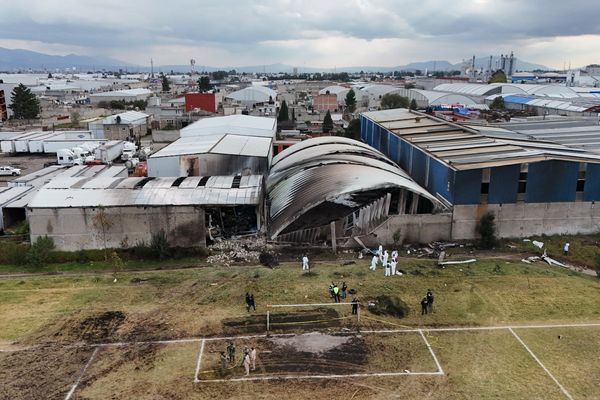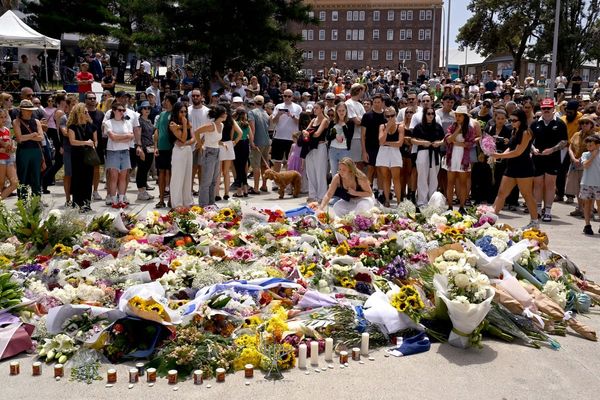
In a few days – and for the first time outside Mexico - London’s V&A Museum will open what’s expected to be one of the major blockbuster exhibitions of the year, Frida Kahlo: Making Herself Up on the artist whose irrepressible spirit, artistic production, fashion style and tragic personal story of love, illness and betrayal have made her an icon of our times.
The Kahlo exhibition, which will run from June 16 to November 4, includes not only self-portraits and paintings but personal possessions including her distinctive clothes, jewels featuring her pre-Columbian necklaces, cosmetics, and letters, as well as items related to her chronic ill-health: medicine bottles, medical corsets and a defiantly-embroidered, red-leather-clad prosthetic leg to which Frida tied bells.

Those and 200 other objects were kept sealed in her Mexican house for more than 50 years. After she died in 1954 at the age of 47, her husband, the famous muralist Diego Rivera locked her belongings in a room with orders not to be opened until after his death.
The London exhibit, which was developed in close collaboration with the Museo Frida Kahlo in Mexico City, will also show films and photographs recounting a visual narrative of her life.
Reimagining Kahlo’s home – the Blue House on the outskirts of Mexico City, where she was born, lived and died – the exhibit explores her life as a child with her family up to her marriage to Diego Rivera and includes an album of architectural church photographs by her German father, Guillermo Kahlo, early paintings and photographs of Frida and Rivera together and with their influential circle of friends, among which was the founder of surrealism, André Breton, and Leon Trotsky, who lived in the Blue House for two years, until not long before he was assassinated in 1940 with an ice pick.

“Making Herself Up will be the first exhibition outside of Mexico to display her clothes and intimate possessions,” explains the museum. “We are reuniting them with key self-portraits and photographs to offer a fresh perspective on her compelling life story. We will present an unparalleled insight into Kahlo’s life revealing some objects that have never been on show before.”
Before “tell-all” books, internet exposure and reality TV, Frida was a harbinger for open, liberating and frank talk. “Pain, betrayal, heartache, miscarriages, infertility, disability…Frida shared everything in technicolour images and minute detail because, despite the great suffering she experienced, she never allowed it to diminish her spirit,” writes Daily Mail’s art critic.

Khalo’s name has been in the news recently due to three separated events: another of the periodic rediscoveries of her revolutionary looks and favorite color palette by the fashion industry, with a number of fashion houses basing their latest collections on her original and always contemporary style – and using her name to define them.
A massive Google Arts & Culture digital retrospective of Kahlo’s life and legacy featuring 800 items from 33 museums in seven different countries, titled ‘Faces of Frida’, that includes not only Kahlo’s paintings, but also her letters, personal photographs and unpublished writings.
And the recent controversy triggered by a Mexican court’s ruling that blocks Mexican sales by the giant toymaker Mattel of its new Frida Khalo Barbie doll, one of a collection depicting inspirational women.
The dispute, first raised by Khalo’s relatives, hinges on who controls the rights to her image. “Barbie is an American icon that has often been criticized for promoting an unrealistic body image and consumerist lifestyle,” the Guardian wrote. “Kahlo was a lifelong communist. ”


Frida Kahlo: Making Herself Up will also explore how the artist empowered herself through her art, clothes and style after her difficult early life. At age 18, she was involved in a near-fatal bus crash that left her in pain and incapacitated for long periods.
The V&A show includes 22 colourful and often paint-splashed Tehuana garments she wore and that made her image so recognizable through the hundreds of photographs that exist of her and her numerous self-portraits.
There’s also one of the “Ebony” eyebrow pencils she used to emphasize her monobrow, her favorite “Everything’s Rosy” lipstick by Revlon and some less fashionable items like the plaster corsets she had to wear to support her back which, like her prosthetic boot, she decorated with paintings.


The exhibition examines the artist’s enduring image – which she carefully choreographed, and the reason why she continues to be a timeless “It Girl” recognized around the world 64 years after her death – as one of the most iconic female artists of the 20th century.
“I’m not at all sure that fashion has glamorized or sanitized her,” explained Circe Henestrosa, the curator of the V&A exhibition. “I think she was incredibly glamorous and sophisticated already.”

“A countercultural and feminist symbol, this show will offer a powerful insight into how Frida Kahlo constructed her own identity,” said Claire Wilcox, Senior Curator of Fashion at the V&A and exhibition co-curator. “This show is a rare opportunity for visitors, offering unique access to an archive that has never left Mexico before.”
In “Viva Frida,” a salute to the spirit and genius of the iconic artist, the Daily Mail writes that although in her lifetime Frida was overshadowed, literally and figuratively, by her muralist husband, today she “has posthumously eclipsed him and become probably the most famous female artist who ever lived.”








